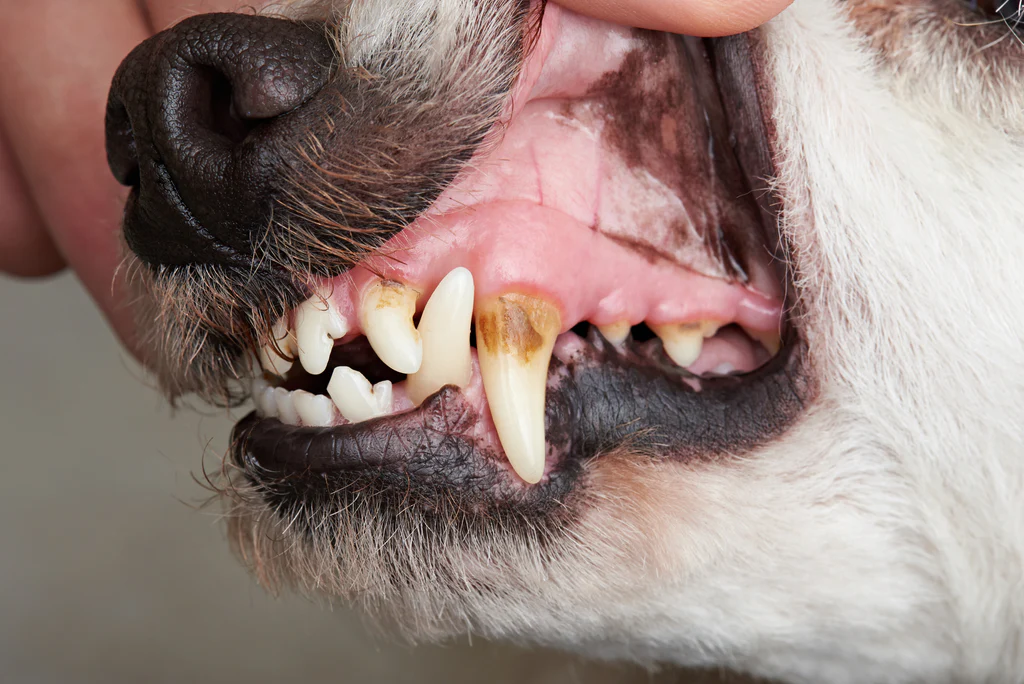Fishy Fido: Unveiling the Mystery Behind Your Dog’s Peculiar Breath
Ah, dog breath. It’s a fact of life for every dog owner. While the occasional whiff is to be expected, a persistent fishy odor emanating from your canine companion can be quite unpleasant and a cause for concern. This comprehensive guide dives deep into the potential reasons behind your dog’s fishy breath, helping you identify the culprit and ensure your furry friend’s dental health and overall well-being.
Beyond the Bowl: Exploring the Causes of Fishy Breath in Dogs
Unlike the delightful aroma of fresh seafood, fishy breath in dogs is a sign of something amiss. Here are some of the most common culprits:
- Dental Issues: Just like humans, poor dental hygiene in dogs can lead to bad breath. Tartar buildup, inflamed gums (gingivitis), and dental infections can all contribute to a fishy odor. Regular dental checkups and proper at-home dental care are crucial to prevent these issues.
- Dietary indiscretion: Has your dog gotten into something they shouldn’t have? Scavenging or consuming unusual items, like dead fish or spoiled food, can cause temporary fishy breath.
- Digestive Problems: Certain digestive issues, like inflammatory bowel disease (IBD) or intestinal parasites, can disrupt the gut microbiome and lead to fishy breath.
- Kidney Disease: In advanced stages, kidney disease can cause a fishy or ammonia-like odor on the breath due to the buildup of waste products in the bloodstream.
- Diabetes: Uncontrolled diabetes can lead to a fruity or acetone-like odor on the breath.
Note: This list is not exhaustive. If you suspect an underlying medical condition, consult your veterinarian for a proper diagnosis and treatment plan.
Diagnosing the Cause: When to See the Vet
While a fishy odor occasionally isn’t a cause for immediate alarm, it’s crucial to seek veterinary attention if:
- The fishy breath is persistent and accompanied by other symptoms like lethargy, vomiting, diarrhea, or loss of appetite.
- Your dog has difficulty chewing or eating.
- You notice signs of dental problems like bleeding gums, loose teeth, or excessive drooling.
Early diagnosis and treatment of any underlying medical conditions can significantly improve your dog’s health and eliminate the unpleasant fishy breath.
Fresh Breath for Fido: Preventive Measures and Dental Care Tips
Here are some steps you can take to keep your dog’s breath smelling fresh and maintain good oral health:
- Regular Dental Checkups: Schedule professional dental cleanings for your dog at least once a year, or more frequently if recommended by your veterinarian.
- At-Home Dental Care: Brushing your dog’s teeth daily with a dog-specific toothpaste and toothbrush is ideal. Dental chews and treats can also help reduce plaque and tartar buildup.
- Diet: Feed your dog a high-quality diet that promotes dental health. Kibble with a crunchy texture can help scrape away plaque as your dog chews.
- Dental Treats and Toys: Provide your dog with dental chews and toys specifically designed to promote chewing and reduce plaque buildup.
- Fresh Water: Ensure your dog has access to fresh, clean water at all times. Proper hydration helps with digestion and can also help freshen breath.
By implementing these preventive measures and maintaining a good dental hygiene routine for your dog, you can significantly reduce the chances of fishy breath and ensure your furry friend has a healthy mouth and fresh breath.
FAQ: Frequently Asked Questions About Fishy Breath in Dogs
Q: My dog only has bad breath in the morning. Is that normal?
A: Morning breath is somewhat common in dogs, just like in humans. However, if the odor is particularly strong or fishy, it could still be a sign of an underlying issue. Monitor the severity and duration of the bad breath, and consult your veterinarian if you’re concerned.
Q: What kind of toothpaste can I use for my dog?
A: Never use human toothpaste on your dog. Human toothpaste contains ingredients that can be harmful to dogs if swallowed. Use a dog-specific toothpaste formulated for canine use.
Q: My dog hates having their teeth brushed. What can I do?
A: Start by introducing the toothbrush and toothpaste slowly, letting your dog get comfortable with the taste and feel. Offer praise and treats during the process. There are also finger brushes that you can use if your dog absolutely won’t tolerate a traditional toothbrush.
By understanding the potential causes of fishy breath in dogs and implementing preventive measures, you can ensure your furry friend has a healthy mouth, fresh breath, and happy smiles for years to come.






More Stories
Where to Watch USMNT vs Jamaica National Football Team
How I Met My Monster
How Should a Ring Fit